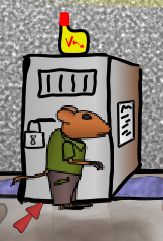Quote from: Crimson Wizard on Sat 16/04/2022 19:25:38
What fernewelten is refering to, probably, is of is checks that are done by the script interpreter during certain bytecode operations. Like - stack operations. They probably happen all the time, for every little move on the stack (I may be mistaken here, because some were disabled in the past).
Yes, that's the gist of what I was trying to say. When the script interpreter is told to float-add two things, for example, it doesn't just do just that, it checks beforehand whether the respective register etc. has been loaded, whether a value of type 'float' has been written into it, and so on. That's good for checking whether the Compiler has done its thing correctly. That mechanism is bound to have discovered lots of bugs by this time.
But the trouble is, if the Compiler has done the job properly that it was programmed for, then those checks might still be done thousands of times at runtime, over and over again, even for the same source code statement and the same block of Bytecode, when it needn't have been done at all.
There are certain things that the Compiler can't check, for instance whether a pointer location that needs to be dereferenced contains a null pointer at runtime. It's sensible to make the script interpreter check these things. The Compiler may even tell the script interpreter to check something specific, by issuing a suitable Bytecode instruction.
On the other hand, there are a lot of things that the Compiler could make sure of, given our AGS language. For instance, it should be able to make sure that a memory location that is supposed to contain a float hasn't been loaded with an int instead. In these cases, a lot of time can be saved by letting the Compiler do its thing, and telling the interpreter: “Look, Buster, Master has told you that these two things are floats and commanded you to add them, so just obey right now without wasting Master's time!â€
It would mean requiring that every Bytecode that is given to the Engine has been produced by the Compiler, or at least, that if you do give "hand-written assembly Bytecode" to the Engine, side-stepping the Compiler, you do it at your own risk.





